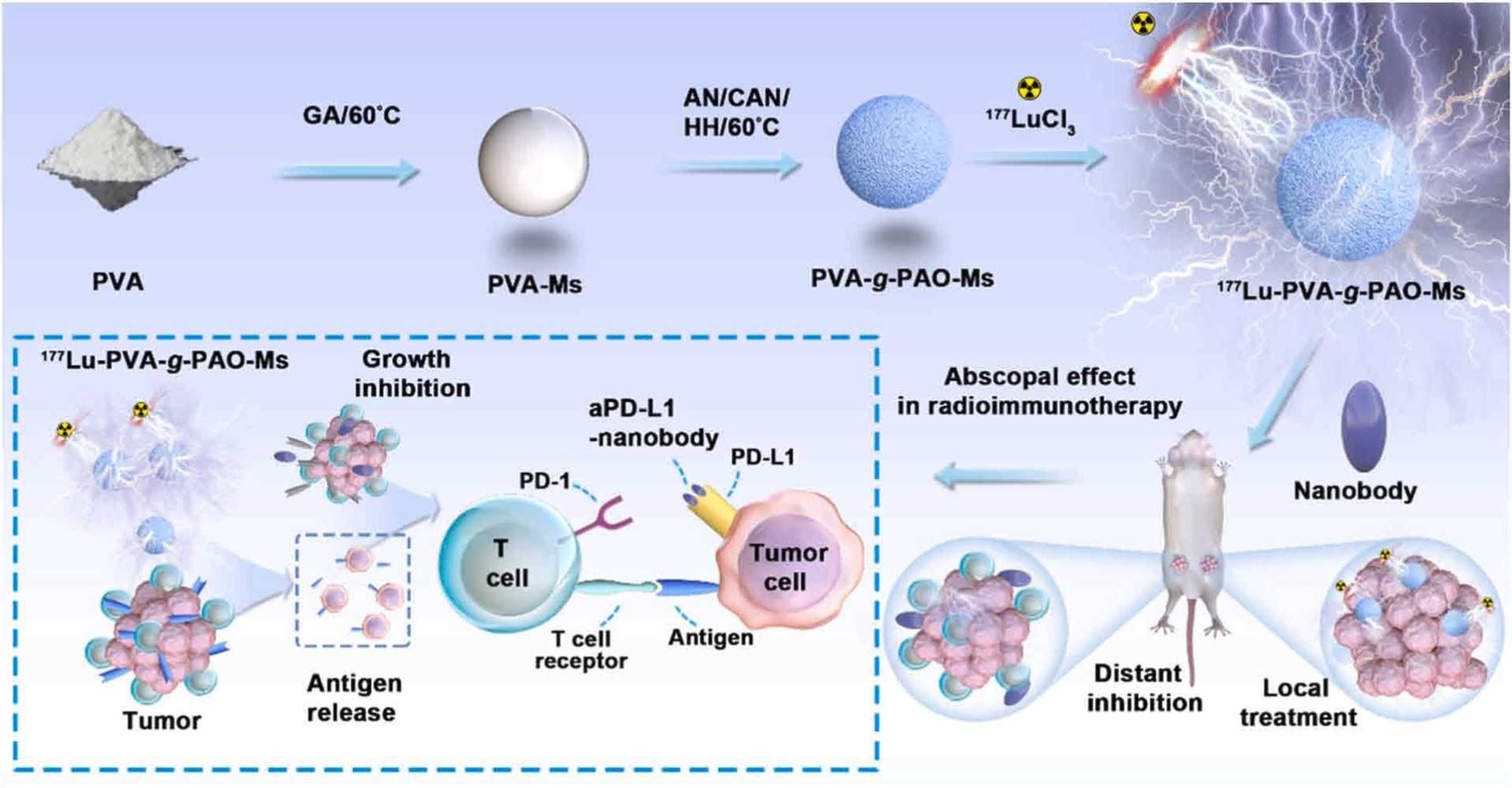Abstract
Trans-arterial radioembolization (TARE) therapy confronts significant technical challenges in the preparation of metal nuclide-labeled microsphere carriers, the development of stable and efficient radionuclide labeling strategies, and the ability to treat multiple small lesions in solid tumors. In this study, we synthesized 177Lu-labeled amidoxime-based polyvinyl alcohol microspheres (177Lu-PVA-g-PAO-Ms) using in situ synthesis of trunk compounds with chem-induced grafting polymerization. The resulting 177Lu-PVA-g-PAO-Ms showed excellent stability in radiolabeling and demonstrated high accumulation and prolonged retention in various preclinical rodent models, as observed through SPECT/CT imaging. The cumulative radioactivity uptake in the tumor reached as high as 12.27 %ID/g. In a mouse subcutaneous metastatic tumor model, we observed a significant abscopal effect of radioimmunotherapy after administering a combination of 177Lu-PVA-g-PAO-Ms and an anti-PD-L1 nanobody. These findings highlight the ability of PVA-g-PAO-Ms to chelate radionuclides efficiently and securely. Furthermore, when combined with nanobodies with enhanced tissue penetration capabilities, these microspheres hold great potential as innovative carrier platforms, offering new therapeutic strategies for integrating TARE with systemic immunotherapy.

文章链接:https://www.sciencedirect.com/science/article/pii/S1748013224002391